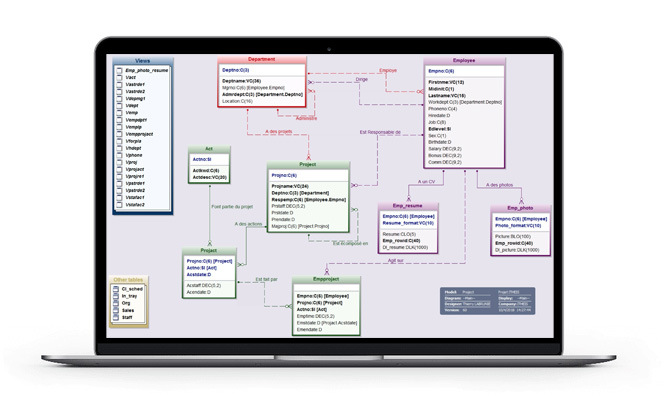Step Three: Implement relationships in the database, at you own pace
To obtain all the benefits of database relationship discovery and database normalization, relationships should be implemented in a modernized SQL database.
Xcase for i allows you to declare them in the DB and to disable them until you make sure that applications respect them. Automatically generated triggers allow you to discover those issues without breaking your existing applications.
When an implicit relationship cannot be declared in SQL, “Xcase for i Alternative Relationship” provides a solution. It will implement a functionally equivalent relationship providing flexibility and better performance, and allowing old and new applications to co-exist.
When your old applications are updated to use the new identity-based relationships, the triggers and the old Foreign Keys can be removed.
 Automatically discovering and documenting implicit relationships
Automatically discovering and documenting implicit relationships Automating the creation of a metadata layer for faster BI implementation
Automating the creation of a metadata layer for faster BI implementation Discovering referential integrity issues and the applications causing them
Discovering referential integrity issues and the applications causing them Implementing optimal declarable relationships without disrupting existing applications
Implementing optimal declarable relationships without disrupting existing applications




